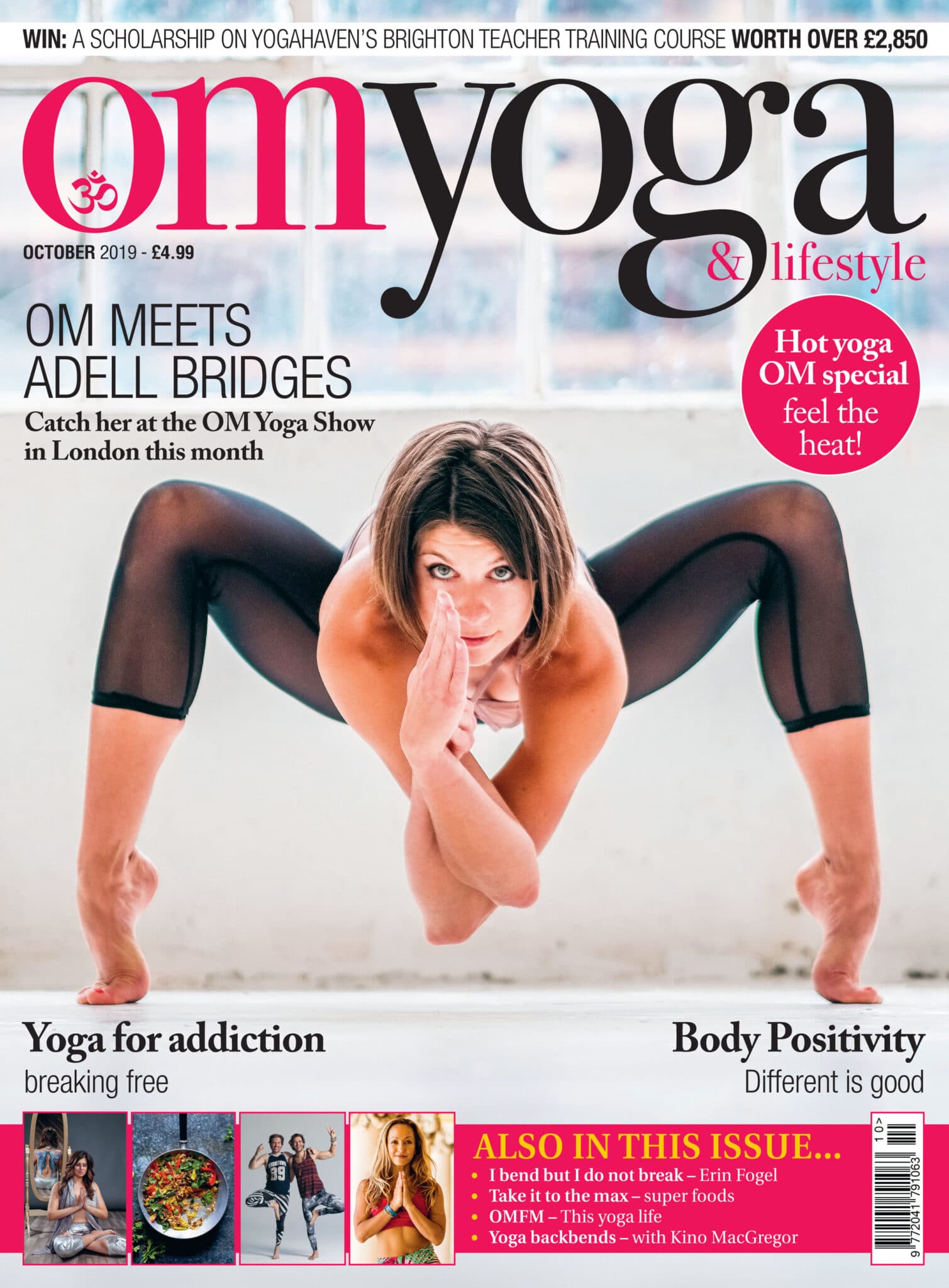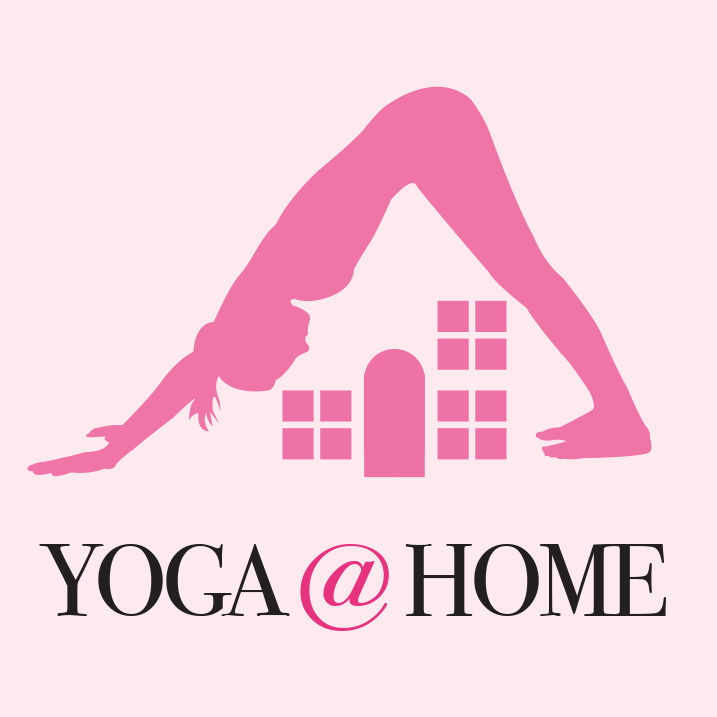
Yoga backbends
Get back to basics with this backbending tutorial focusing on Camel pose (Ustrasana) from Kino MacGregor
As far as yoga poses go, backbends tend to be a more intimidating family of asana (yoga postures), especially for newer practitioners. This tutorial by Kino MacGregor is designed to help students get super comfortable with one of yoga’s more entry level backbends, Ustrasana, aka, Camel pose. In particular, this posture promotes healing and is helpful for developing strength and flexibility in the spine. The great thing about this pose is you can start with simpler variations and over time, work your way up to a deeper expression.
If you’re still a little nervous about backbends, there are plenty of reasons to consider including them in your practice. As the muscles around your spine lift and create space around the vertebrae, the front body lengthens, the legs engage, the pelvic floor firms, and the shoulders and chest open. On a more internal level, the digestive system is cleansed and the cardio-vascular system is stimulated. Finally, on an energetic level, the vital life essence known as Prana is pushed upwards along the central channel, often bringing heat,
emotions and rarefied states of consciousness to the surface.
When it comes to practicing this pose safely, the key is in creating space through the centre of the spine. That’s why this pose in particular begins with rooting down through your foundation. The action of rooting down often creates more capacity for activating through the muscles along the spinal column and creating the kind of lift that will help bring space between each of your vertebra, especially in the lower back.
If you feel comfortable coming into a deeper expression of this posture without discomfort in your low back, then you may be ready to explore a few more challenging backbends. If you are overwhelmed – physically or emotionally – use the variations offered in this tutorial and keep working at it until you feel stronger and more comfortable. It takes time to train our nervous system to feel safe in certain postures. But, over time, with focus on the breath and being patient with yourself you may be ready to explore different variations of Ustrasana and the backbending family.,...
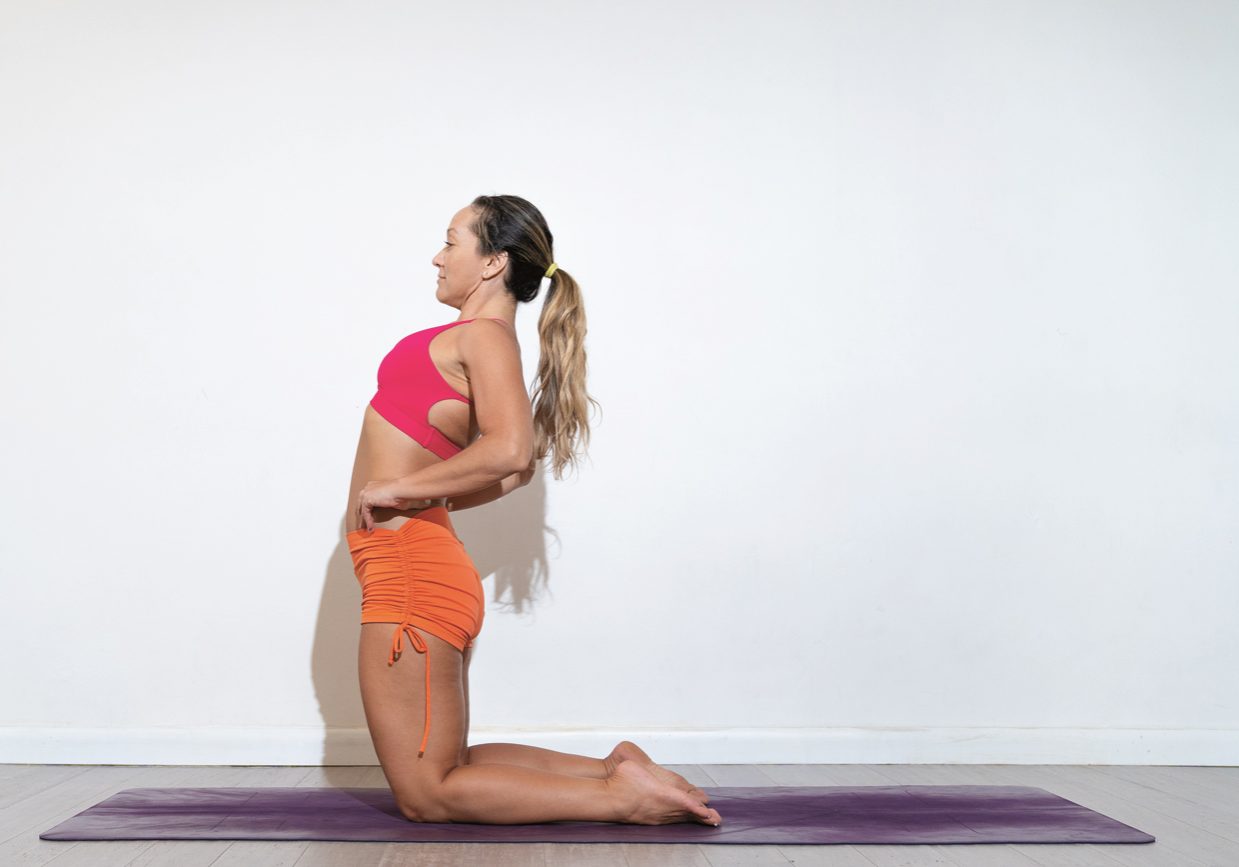
1.
Come to standing on your knees and root down into your legs. Use this action of rooting down to get longer through the spine as you begin to open up through the chest. Bring your hands to your hips to help keep your pelvis centred over your knees.
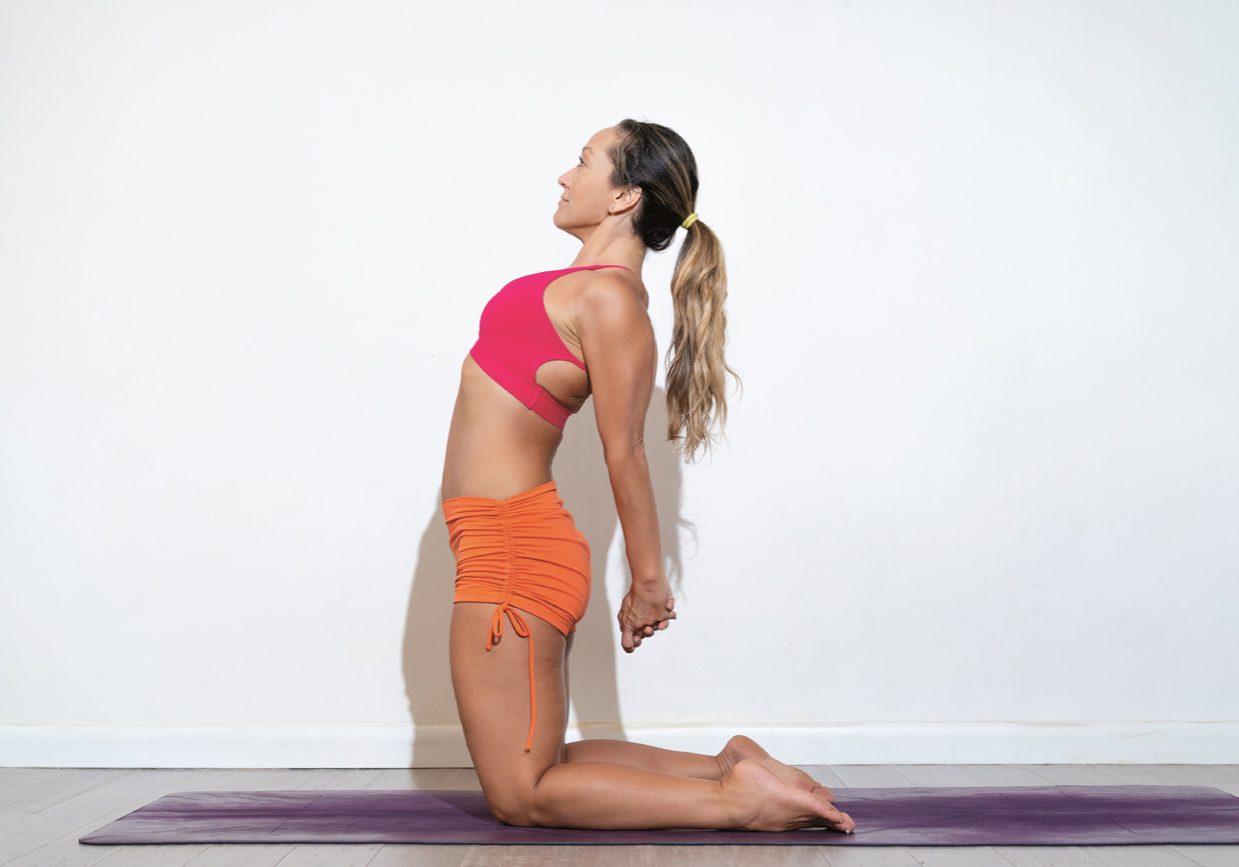
2.
Next, you can add a little more intensity to the pose by clasping your hands together behind your back. Actively draw your shoulderblades in towards one another and pull your knuckles down toward the mat to create more lift and opening in your chest. Stay long through your spine and rooted through your legs.
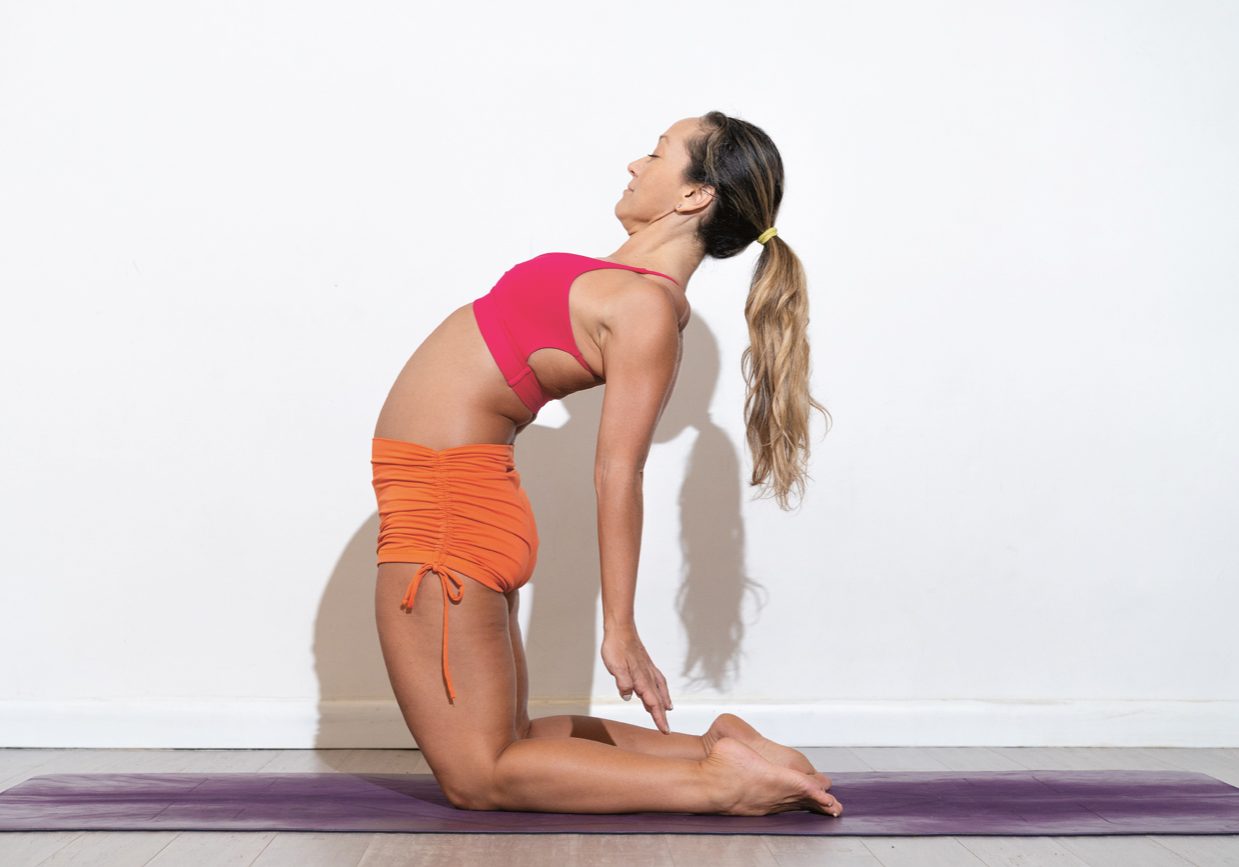
3.
If you feel okay to go deeper, open the chest even more so that you can begin to reach your hands back for your heels. Try to keep your hips centred over your knees, lift in the torso, shin bones pressing into the floor.
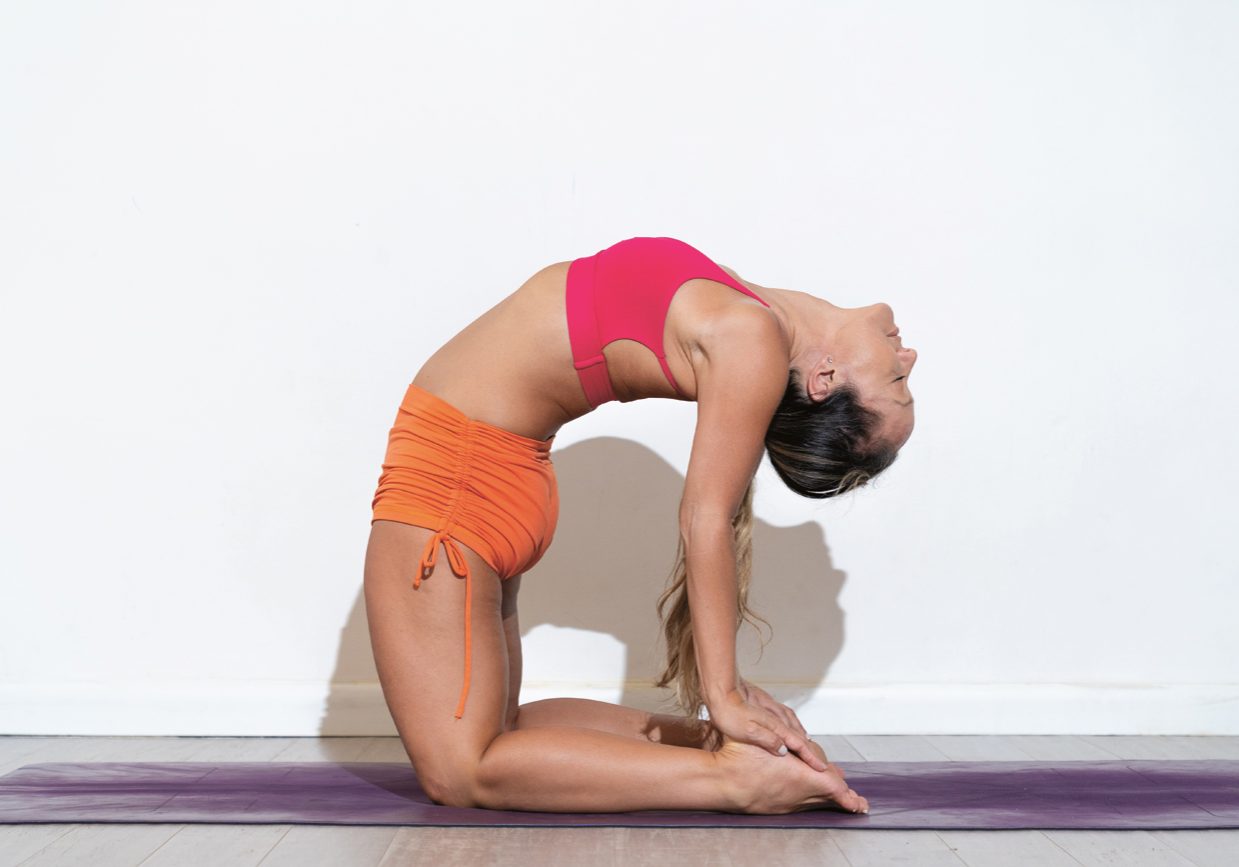
4.
If you’ve reached your heels, you can come into the full variation of this pose by gently releasing through the back of your neck. Maintain all of your engagements: abdomen engaged, pelvic floor lifted, rooting down through your legs and actively lifting through the chest.
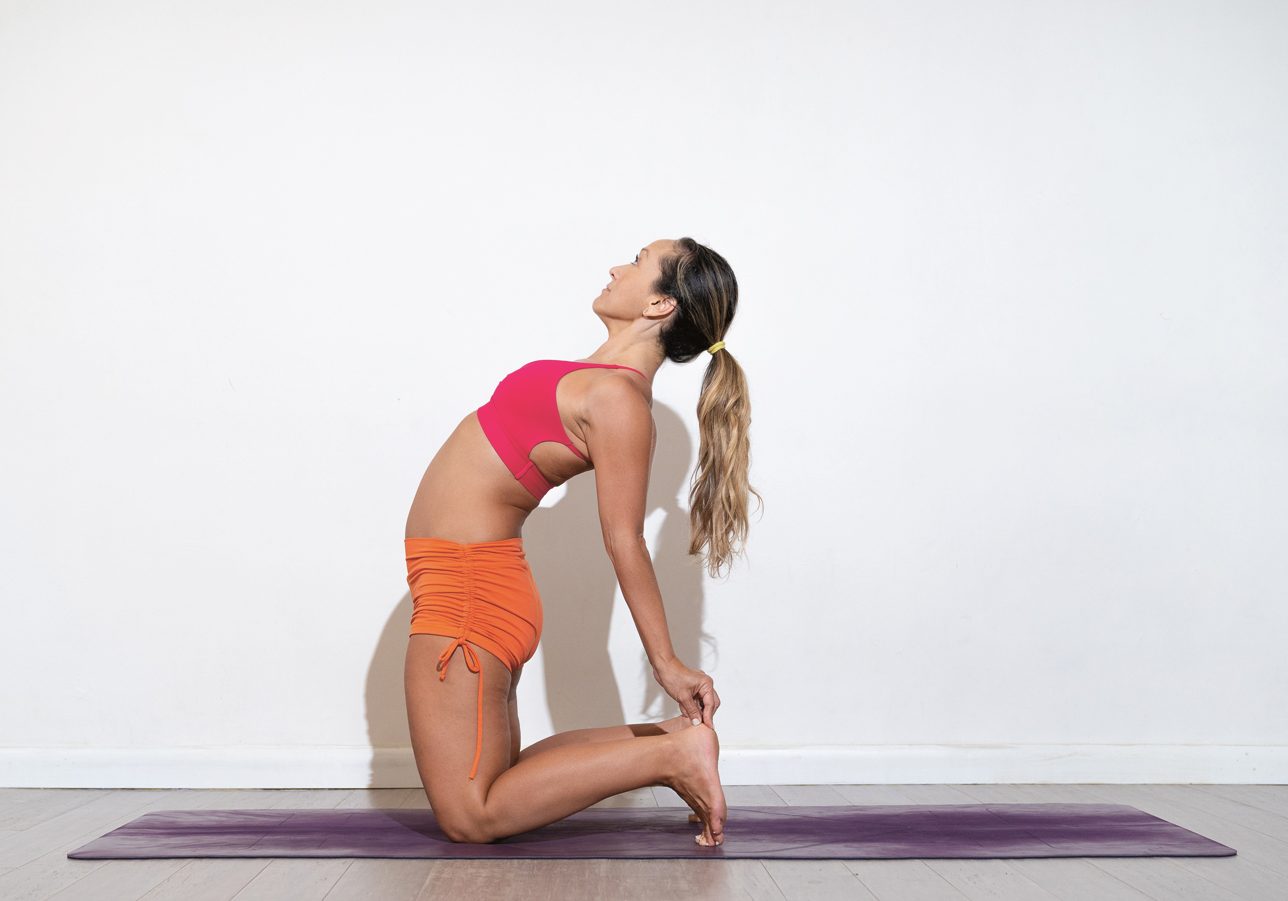
5.
If your heels feel too far away or reaching for them causes you discomfort, modify the pose by coming up onto your toes. Let your fingertips rest gently on your heals, and again, maintain all of your activation through the legs and torso.
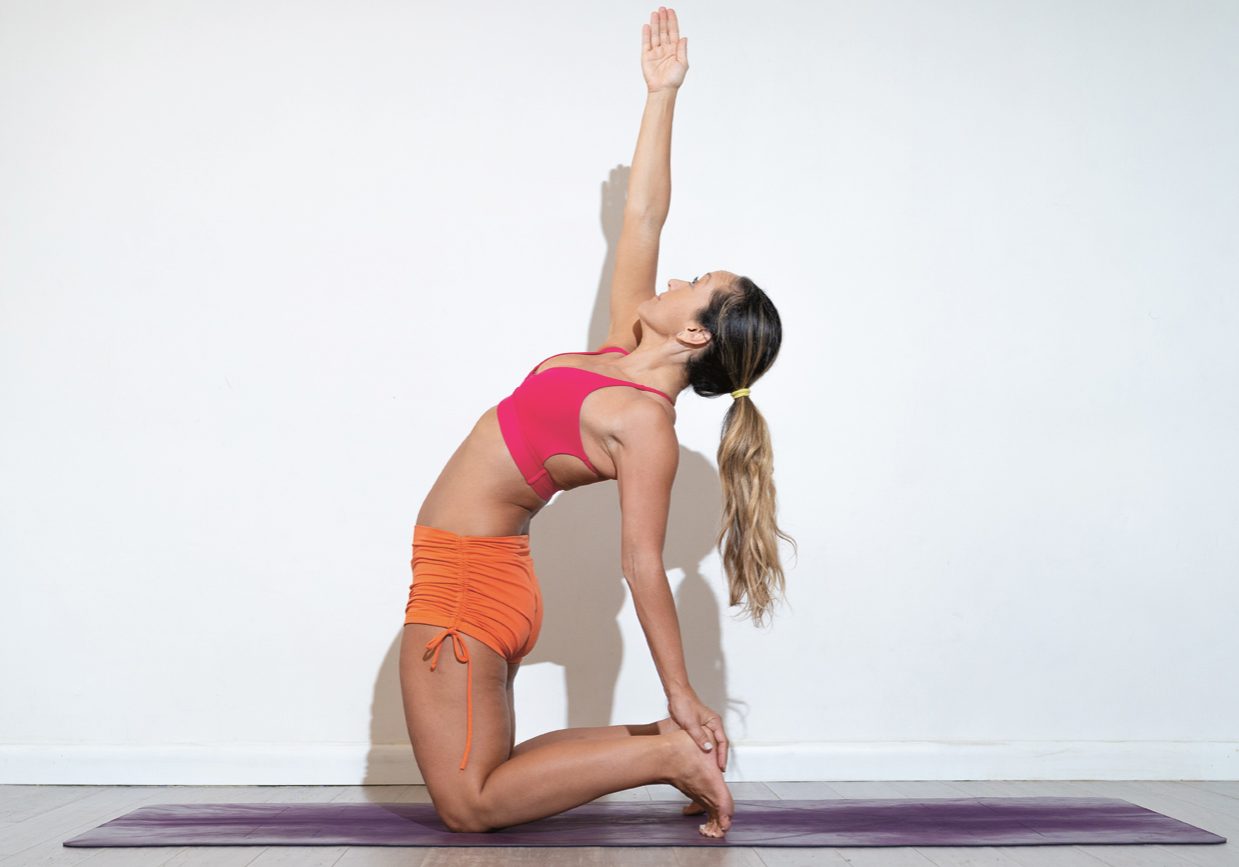
6.
Another modification you can try is reaching down with one hand only, and then reaching up with the opposite hand to help you maintain the lifting action through the chest.
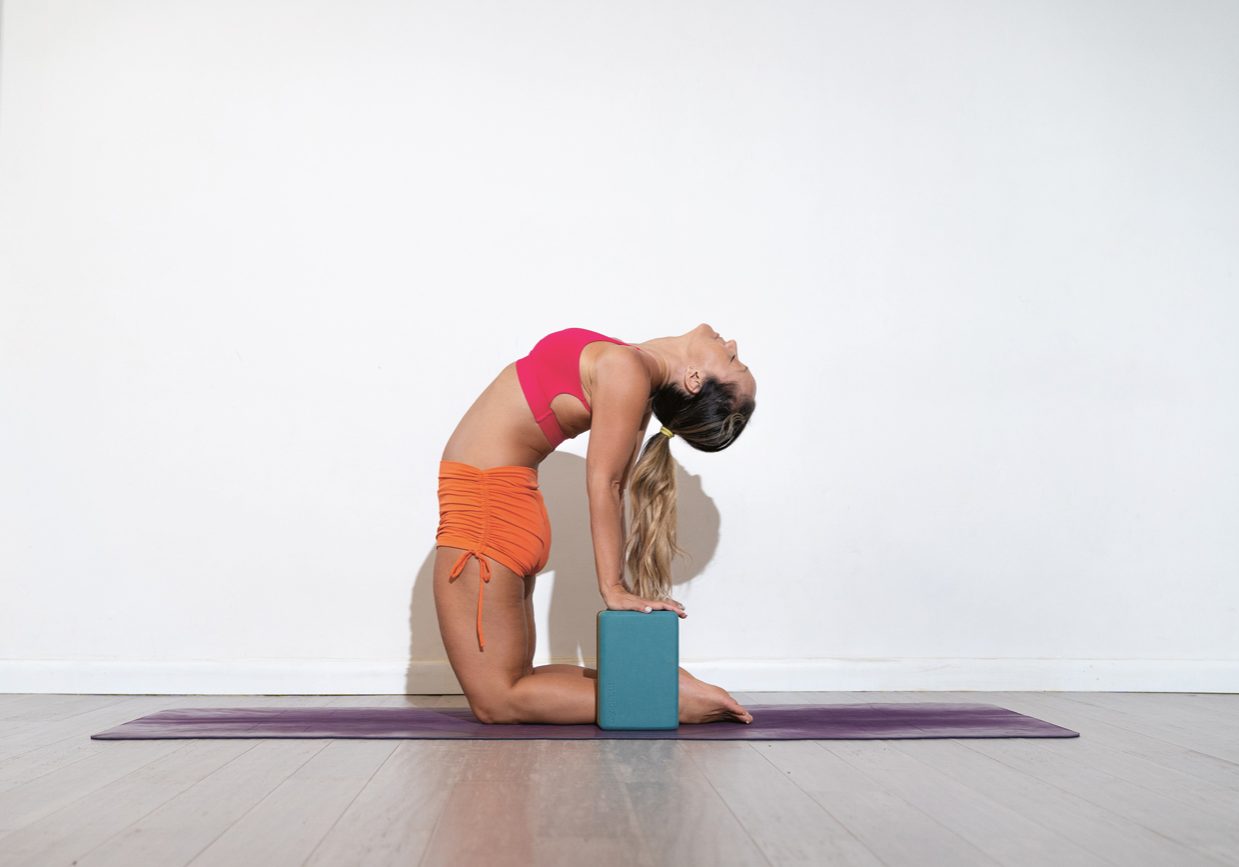
7.
If you struggle to stay lifted through your chest, bring the ground up to meet your hands by using blocks and adjust the pose to meet your unique needs. Reach for the blocks instead of your heels, this will help decrease compression in the lower back and keep your chest open.
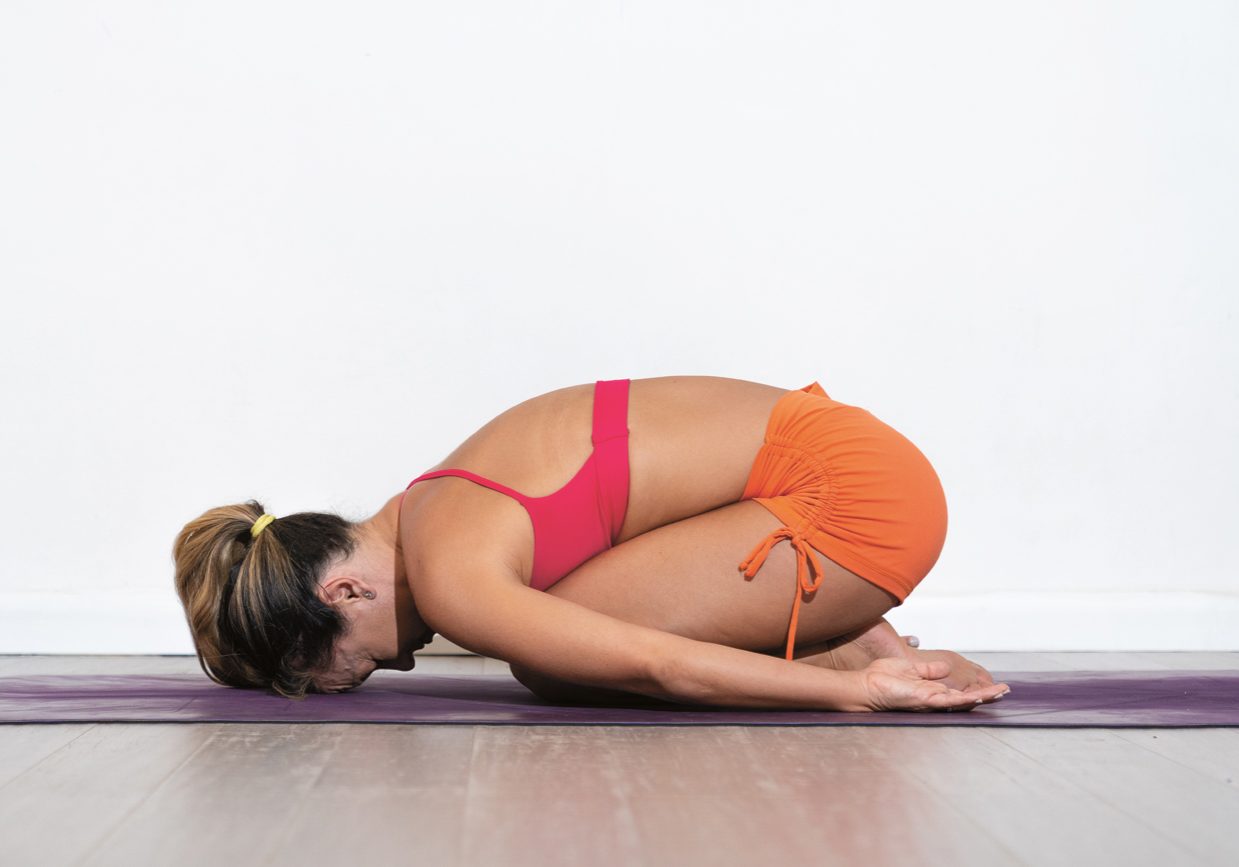
8.
Child’s pose is a common counter movement to use after backbends. However, you maybe also find it helpful to first come into a gentle forward fold prior to balasana. Gentle forward flexion post extension helps to first lengthen the spine before more deeply releasing the lower back, sacrum and hips.



